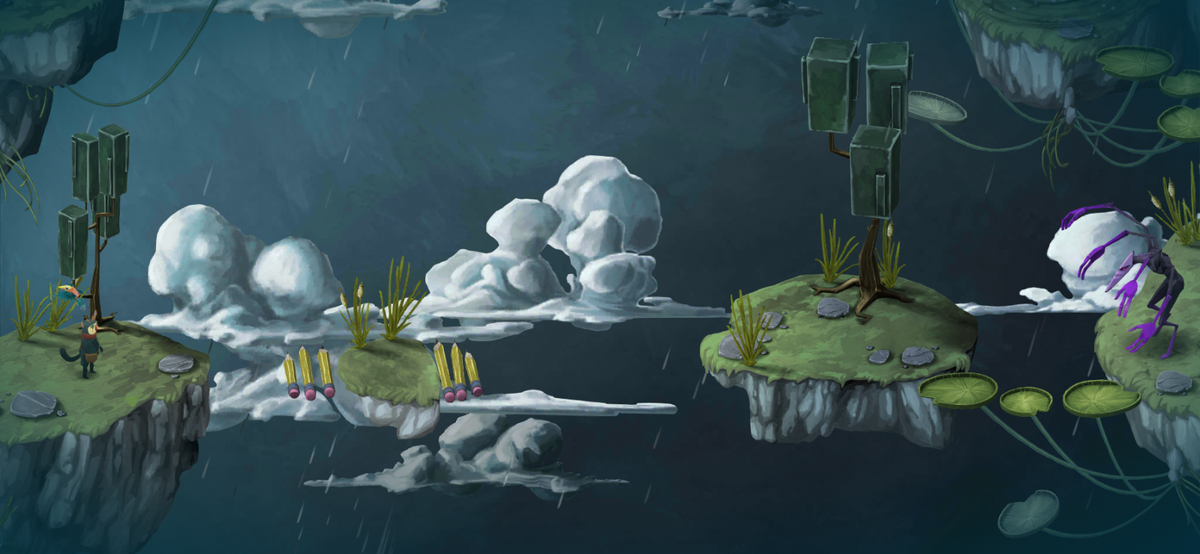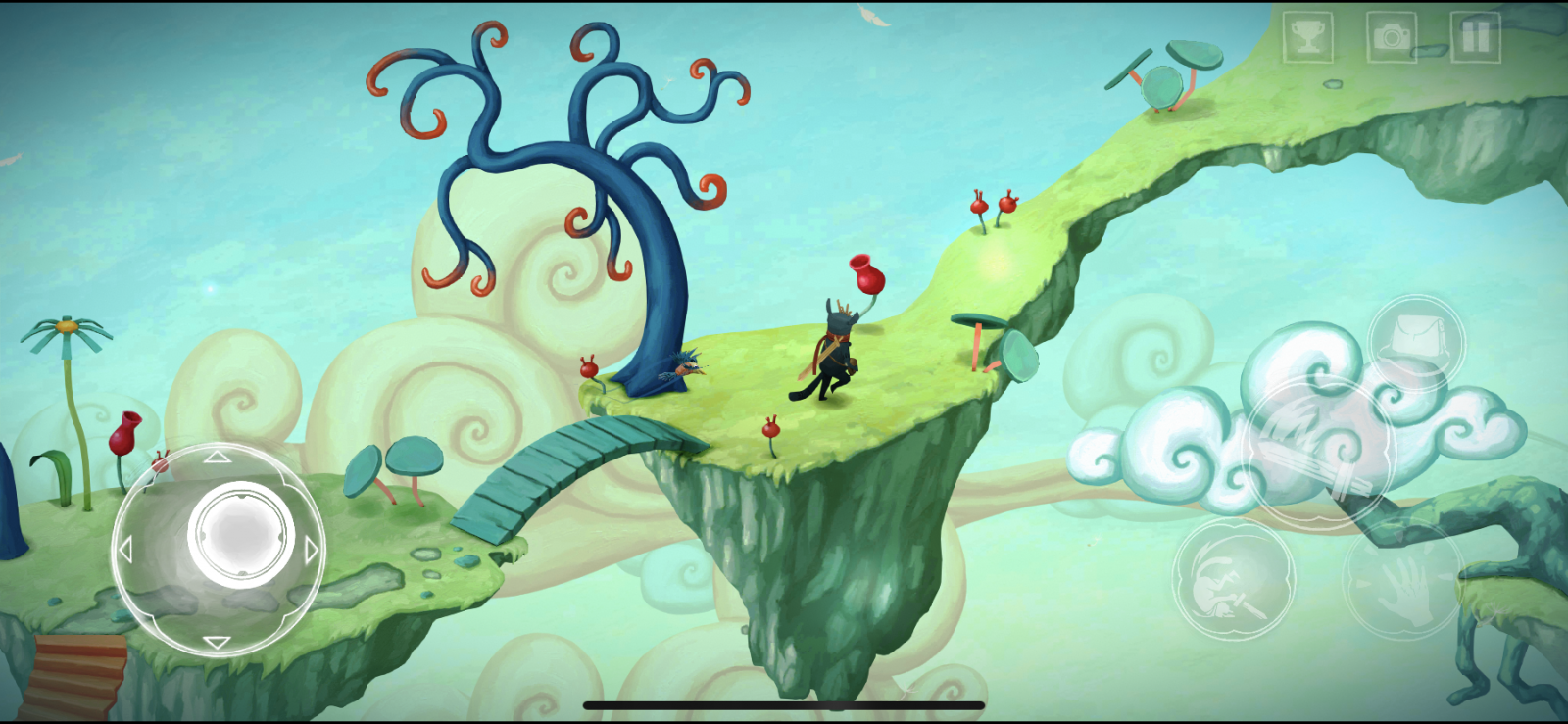
When I reviewed Figment in 2018 for the Switch, I loved the setting, music, and characters of the game and was underwhelmed with the gameplay and puzzle design. Much of the experience in this isometric puzzle-adventure felt like merely going through the motions to see the next beautifully crafted area or hear the next compelling piece of music. The story takes great pains to dig deep into the mind of this young girl whose trauma frames the whole story, but the puzzles do little to dig into the mind of the player. This is a return trip for me, but even on my first playthrough, the most challenging part of the puzzles was simply navigating from A to B and not doing any actual puzzling.
With the gameplay being its weakest component, the transition to mobile devices is not the smoothest, but the nature of a mobile game helps the game’s limited puzzles slightly. All of my issues with the game were still present, but likewise all of the excellent qualities are here as well. The digital thumbstick was serviceable if not obviously a bit less effective than the Switch’s Joy-Cons, but to its credit, it never felt outright unplayable or completely distracting. It worked.

Fortunately, despite having a relatively complicated control-scheme for a touchscreen with a roll and attack button in an isometric 3D space, it never actually asks so much of you that it becomes unwieldy and frustrating. It’s an area where the concessions of a phone seem to mesh better with the game design because on Switch your combat options felt too limiting and underdeveloped. But here any more combat options would have made this port almost completely untenable.
What is helpful about this version of Figment—that was technically true of the Switch version as well but not to this degree—is that being able to pick it up on the go really helped diminish some of my complaints about the design. It’s not that the puzzles were suddenly brilliant, but playing in shorter bursts let me enjoy the world design while the puzzles merely took up my time waiting for an oil change or while the family watched football on Thanksgiving. Like Dusty, the game’s protagonist, playing piecemeal gave me quick pickups of endorphins without the hit from longer gameplay sessions. It seemed to work better for me as a mobile experience in that regard. A large part of what makes Figment special, though, is its music, so pack headphones or you’re only getting half of the experience.
Otherwise, not much has changed here; the hand-painted art is still striking and fun and the world design still manages to endear even on the smaller screen. As can probably be expected from most phone games of this scale, it chewed through my battery, so just be wary before you boot it up waiting for your flight. Despite—and in spite of—the mobile version’s limited control scheme, this may be the preferred way to play this game. Its broader issues aren’t magically solved, but are much less noticeable in this format, so it becomes slightly easier to recommend on the back of its art and narrative.
Figment
All Right
Figment’s representation of the mind is still as beautiful on a phone screen as it was on a television, and the shorter sessions I tended to play on my phone helped obscure some of the weaker elements. It doesn’t turn this into a classic, but like the Switch version, come for the music and visuals, not the puzzles.
Pros
- The hand-painted art really pops on the small phone screen
- The music still helps set this game apart
- Playing on the phone actually helped me overlook some weaker elements
- Some cute and witty writing
Cons
- It often turned my phone into a functional hot plate
- Despite benefitting from a mobile experience, the gameplay and puzzles are still not terribly rewarding
- Combat works on the phone, but feels as unnecessary as ever
